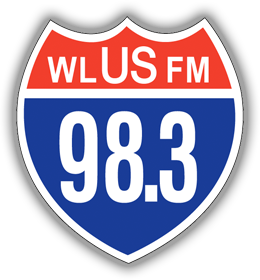SERVPRO of Palo Alto provides the storm and flood restoration services homeowners and businesses need when facing storm damage and flooding in Palo Alto and the surrounding Bay area. Storm damage and flooding can create an unsafe environment for people in affected areas. The disaster zone may encompass an entire state, as in the case of a hurricane. In other cases, the affected area may be as small as a neighborhood if the culprit is a stalled thunderstorm. Raging floodwaters, washed-out roadways, bridges, downed trees, and power lines are some of the dangers of severe weather. People in a flood zone should make every effort to stay safe. Electrical hazards are often unseen, silent, and sudden, allowing little or no time for the victim to respond, recover or retreat. Follow these tips to protect against electrical hazards during severe weather and flooding.
.png)
Tip #1: Practice extreme caution around downed power lines
Assume a downed power line is or may become charged with electricity without warning. Inform the power company of the incident. Stay away from overhead power lines with equipment such as a ladder, metal pole, or tree limb.
Avoid driving through water possibly electrified by fallen power lines. If a power line snaps and falls onto a vehicle, the driver should remain inside the vehicle. If possible, drive out from under the power line. Do not touch the ignition switch if the vehicle should stall. Caution bystanders to avoid touching the vehicle and the power line. Water puddles around the vehicle can electrocute anyone who comes into contact with the water. Only first responders should approach the vehicle.
Tip #2: Exercise great care when dealing with electrical issues in a home or business after storm damage or flooding.
Shut off the power at the main breaker before dealing with water-damaged electrical circuits and equipment. If access to the main power switch requires standing in water, secure the services of a licensed electrician to manage the task and resolve any risk hazards.
- Wait to enter the storm-damaged or flood-damaged structure until emergency personnel declares the scene safe.
- Before being plugged in and turned on, all electrical equipment and appliances should be thoroughly dried and tested by a certified professional.
- Do not touch or operate appliances or power tools while standing in water or on soaked carpeting.
Pay attention to these electrical hazard warning signs:
- frayed wiring
- sparks or popping noise when the power is turned on
- the odor of burning plastic or wood
- smoke and flames coming from electrical circuits, appliances, or the HVAC system
Shut off the power if any of these danger signs are noticed. The safest and best action is to hire an electrician to inspect, diagnose, and resolve the issue.
Tip #3: Follow the instructions when using a generator
A generator can make life much easier and safer during a power outage. Have a knowledgeable, certified electrician make the necessary upgrades to the electrical system before using a power generator. Follow the manufacturer’s instructions before using the generator. Stay safe. The inappropriate use of a generator can create a significant fire hazard or endanger utility employees working to restore power in the area.
Electrical shock: What to do
The CDC provides instructions for helping someone who has suffered an electric shock: “Look first. Don’t touch. The person may still be in contact with the electrical source. Touching the person may pass the current through you. Call or have someone else call 911 or emergency medical help. Turn off the source of electricity if possible. If not, move the source away from you and the affected person using a non-conducting object made of cardboard, plastic, or wood. Once the person is free of the source of electricity, check the person’s breathing and pulse. If either has stopped or seems dangerously slow or shallow, begin cardiopulmonary resuscitation (CPR) immediately. If the person is faint or pale or shows other signs of shock, lay him or her down with the head slightly lower than the trunk of the body and the legs elevated. Don’t touch burns, break blisters, or remove burned clothing. Electrical shock may cause burns inside the body, so be sure the person is taken to a doctor.”
After the storm passes and the floodwaters recede
Severe weather can cause extensive storm damage and flood damage, affecting hundreds of homes and businesses. The impact zone may be as large as several states, disturbing the lives of millions of residents. Whether the scope of the disaster is large or small, the damage, hazards, and disruptions are real and pressing. The time to choose a property damage cleanup and restoration company is before the floodwaters rise, trees topple, power poles snap, and the lights go out. At this stage of the disaster, hundreds if not thousands of people will be clogging the phone lines searching for companies to remove the excess water, dry out the remaining moisture, clean up the mess, and restore the damaged contents and structure to their pre-disaster condition. Pre-qualify a dedicated property damage cleanup and restoration company when the skies are clear, the weather is calm, and life is relatively peaceful.
.png)
Locally owned and operated, SERVPRO of Palo Alto is available 24/7, 365 days a year, including holidays, to tackle any size or type of disaster. Crews can arrive on-scene in about an hour or so with the latest equipment, cutting-edge technology, advanced cleaning techniques, and EPA-approved cleaning, disinfecting, and deodorizing products. Technicians are trained, experienced, and IICRC-certified. A rapid response is only one phone call away, no matter what time, night, or day.
For more information about flood restoration services in Sunnyvale, CA, and the surrounding area, contact the office by phone at (650) 800-3448 or email at office@servpropaloalto.com.
































